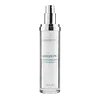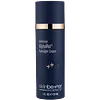What's inside
What's inside
 Key Ingredients
Key Ingredients

 Benefits
Benefits

 Concerns
Concerns

 Ingredients Side-by-side
Ingredients Side-by-side

Water
Skin ConditioningGlycerin
HumectantCetearyl Alcohol
EmollientIsononyl Isononanoate
EmollientPyrus Malus Fruit Extract
Skin ConditioningPotassium Cetyl Phosphate
EmulsifyingTribehenin
EmollientGlyceryl Caprylate
EmollientSodium Polyacryloyldimethyl Taurate
Emulsion StabilisingDisodium Lauriminodipropionate Tocopheryl Phosphates
CleansingSqualane
EmollientLactobacillus Ferment
Skin ConditioningSilica
AbrasivePropanediol
SolventTrisodium Ethylenediamine Disuccinate
Caprylic/Capric Triglyceride
MaskingLycium Barbarum Fruit Extract
AstringentBetaine
HumectantGlyceryl Undecylenate
EmollientCetyl Palmitate
EmollientSorbitan Stearate
EmulsifyingPolysorbate 80
EmulsifyingOpuntia Ficus-Indica Stem Extract
Skin ConditioningCalcium Gluconate
HumectantGluconolactone
Skin ConditioningTremella Fuciformis Sporocarp Extract
AntioxidantSodium Hyaluronate
HumectantCitric Acid
BufferingHydrogenated Lecithin
EmulsifyingGlucose
HumectantHydrolyzed Pea Protein
EmollientTocopherol
AntioxidantSodium Chloride
MaskingPalmitoyl Tetrapeptide-10
Skin ConditioningSodium Succinate
BufferingPhenoxyethanol
PreservativeSodium Benzoate
MaskingBenzoic Acid
MaskingDehydroacetic Acid
PreservativeWater, Glycerin, Cetearyl Alcohol, Isononyl Isononanoate, Pyrus Malus Fruit Extract, Potassium Cetyl Phosphate, Tribehenin, Glyceryl Caprylate, Sodium Polyacryloyldimethyl Taurate, Disodium Lauriminodipropionate Tocopheryl Phosphates, Squalane, Lactobacillus Ferment, Silica, Propanediol, Trisodium Ethylenediamine Disuccinate, Caprylic/Capric Triglyceride, Lycium Barbarum Fruit Extract, Betaine, Glyceryl Undecylenate, Cetyl Palmitate, Sorbitan Stearate, Polysorbate 80, Opuntia Ficus-Indica Stem Extract, Calcium Gluconate, Gluconolactone, Tremella Fuciformis Sporocarp Extract, Sodium Hyaluronate, Citric Acid, Hydrogenated Lecithin, Glucose, Hydrolyzed Pea Protein, Tocopherol, Sodium Chloride, Palmitoyl Tetrapeptide-10, Sodium Succinate, Phenoxyethanol, Sodium Benzoate, Benzoic Acid, Dehydroacetic Acid
Water
Skin ConditioningGlycolic Acid
BufferingSodium Glycolate
BufferingCetearyl Olivate
Pentylene Glycol
Skin ConditioningCyclopentasiloxane
EmollientIsohexadecane
EmollientSorbitan Olivate
EmulsifyingTetrahexyldecyl Ascorbate
AntioxidantGlycerin
HumectantCeresin
Emulsion StabilisingGlycol Palmitate
EmulsifyingButylene Glycol
HumectantNiacinamide
SmoothingSqualane
EmollientMethyl Gluceth-20
HumectantEthyl Lactyl Retinoate
AbrasivePalmitoyl Tripeptide-1
Skin ConditioningPalmitoyl Tetrapeptide-7
Skin ConditioningCeramide NP
Skin ConditioningHyaluronic Acid
HumectantUbiquinone
AntioxidantTocopherol
AntioxidantBisabolol
MaskingTocopheryl Acetate
AntioxidantSuperoxide Dismutase
AntioxidantButyrospermum Parkii Butter
Skin ConditioningAllantoin Glycyrrhetinic Acid
Skin ProtectingSodium PCA
HumectantPanthenol
Skin ConditioningCamellia Sinensis Leaf Extract
AntimicrobialPortulaca Oleracea Extract
Skin ConditioningLinoleic Acid
CleansingCholesterol
EmollientLinolenic Acid
CleansingMagnesium Aluminum Silicate
AbsorbentDimethyl Isosorbide
SolventDimethicone
EmollientGlyceryl Stearate
EmollientPEG-100 Stearate
Steareth-2
EmulsifyingHydroxyethylcellulose
Emulsion StabilisingAcacia Senegal Gum
MaskingXanthan Gum
EmulsifyingHydrated Silica
AbrasiveCarbomer
Emulsion StabilisingPolysorbate 20
EmulsifyingTromethamine
BufferingDisodium EDTA
Ethylhexylglycerin
Skin ConditioningPhenoxyethanol
PreservativeCI 77891
Cosmetic ColorantWater, Glycolic Acid, Sodium Glycolate, Cetearyl Olivate, Pentylene Glycol, Cyclopentasiloxane, Isohexadecane, Sorbitan Olivate, Tetrahexyldecyl Ascorbate, Glycerin, Ceresin, Glycol Palmitate, Butylene Glycol, Niacinamide, Squalane, Methyl Gluceth-20, Ethyl Lactyl Retinoate, Palmitoyl Tripeptide-1, Palmitoyl Tetrapeptide-7, Ceramide NP, Hyaluronic Acid, Ubiquinone, Tocopherol, Bisabolol, Tocopheryl Acetate, Superoxide Dismutase, Butyrospermum Parkii Butter, Allantoin Glycyrrhetinic Acid, Sodium PCA, Panthenol, Camellia Sinensis Leaf Extract, Portulaca Oleracea Extract, Linoleic Acid, Cholesterol, Linolenic Acid, Magnesium Aluminum Silicate, Dimethyl Isosorbide, Dimethicone, Glyceryl Stearate, PEG-100 Stearate, Steareth-2, Hydroxyethylcellulose, Acacia Senegal Gum, Xanthan Gum, Hydrated Silica, Carbomer, Polysorbate 20, Tromethamine, Disodium EDTA, Ethylhexylglycerin, Phenoxyethanol, CI 77891
 Reviews
Reviews

Ingredients Explained
These ingredients are found in both products.
Ingredients higher up in an ingredient list are typically present in a larger amount.
Glycerin is already naturally found in your skin. It helps moisturize and protect your skin.
A study from 2016 found glycerin to be more effective as a humectant than AHAs and hyaluronic acid.
As a humectant, it helps the skin stay hydrated by pulling moisture to your skin. The low molecular weight of glycerin allows it to pull moisture into the deeper layers of your skin.
Hydrated skin improves your skin barrier; Your skin barrier helps protect against irritants and bacteria.
Glycerin has also been found to have antimicrobial and antiviral properties. Due to these properties, glycerin is often used in wound and burn treatments.
In cosmetics, glycerin is usually derived from plants such as soybean or palm. However, it can also be sourced from animals, such as tallow or animal fat.
This ingredient is organic, colorless, odorless, and non-toxic.
Glycerin is the name for this ingredient in American English. British English uses Glycerol/Glycerine.
Learn more about GlycerinPhenoxyethanol is a preservative that has germicide, antimicrobial, and aromatic properties. Studies show that phenoxyethanol can prevent microbial growth. By itself, it has a scent that is similar to that of a rose.
It's often used in formulations along with Caprylyl Glycol to preserve the shelf life of products.
Squalane is an emollient that helps the skin hold onto moisture. It's an oily liquid that occurs naturally in certain types of fish and plant oils.
Because squalane boosts hydration in the skin, it also comes with plenty of benefits: it is an antioxidant and can help fight free radicals and skin damage. Squalane is also found to have a detoxifying effect when applied.
Squalane comes from squalene, which occurs naturally within the sebum of our skin. It is one of the oils our skin produces to keep itself hydrated. Squalane is the hydrogenated version of squalene and has a longer shelf life.
Research shows that squalane is non-irritating (even at 100% concentration).
In general, it's a fantastic ingredient. It does a great job at hydrating the skin, and it's suitable for those with sensitive skin.
The source of squalane may impact malassezia / fungal acne. This is because olive oil derived squalane can contain impurities such as fatty acids and plant waxes. Sugarcane derived squalane is recommended for anyone with malassezia concerns.
Is squalane vegan?
This depends on the source. Squalane can be derived from both plants and animals. Most squalane used in skincare comes from plants.
Please note: the source of squalane is only known if disclosed by the brand. We recommend reaching out to the brand if you have any questions about their squalane.
Read more about squalene with an "e".
Is squalane an oil?
Squalane is often called an oil, but it’s technically not; it’s a hydrocarbon, meaning it’s only made of carbon and hydrogen, unlike true oils which are triglycerides made of fatty acids and glycerol.
The term “oil-free” isn’t regulated, so companies can define it however they want. Some exclude all oils, while others just avoid mineral oil or comedogenic oils.
While some people avoid oils thinking they cause breakouts, the right kind of oil (or oil-like ingredient like squalane) can actually help balance and hydrate your skin. It’s worth testing out simple oils or squalane to see what works best for your skin.
Learn more about SqualaneTocopherol (also known as Vitamin E) is a common antioxidant used to help protect the skin from free-radicals and strengthen the skin barrier. It's also fat soluble - this means our skin is great at absorbing it.
Vitamin E also helps keep your natural skin lipids healthy. Your lipid skin barrier naturally consists of lipids, ceramides, and fatty acids. Vitamin E offers extra protection for your skin’s lipid barrier, keeping your skin healthy and nourished.
Another benefit is a bit of UV protection. Vitamin E helps reduce the damage caused by UVB rays. (It should not replace your sunscreen). Combining it with Vitamin C can decrease sunburned cells and hyperpigmentation after UV exposure.
You might have noticed Vitamin E + C often paired together. This is because it is great at stabilizing Vitamin C. Using the two together helps increase the effectiveness of both ingredients.
There are often claims that Vitamin E can reduce/prevent scarring, but these claims haven't been confirmed by scientific research.
Learn more about TocopherolWater. It's the most common cosmetic ingredient of all. You'll usually see it at the top of ingredient lists, meaning that it makes up the largest part of the product.
So why is it so popular? Water most often acts as a solvent - this means that it helps dissolve other ingredients into the formulation.
You'll also recognize water as that liquid we all need to stay alive. If you see this, drink a glass of water. Stay hydrated!
Learn more about Water